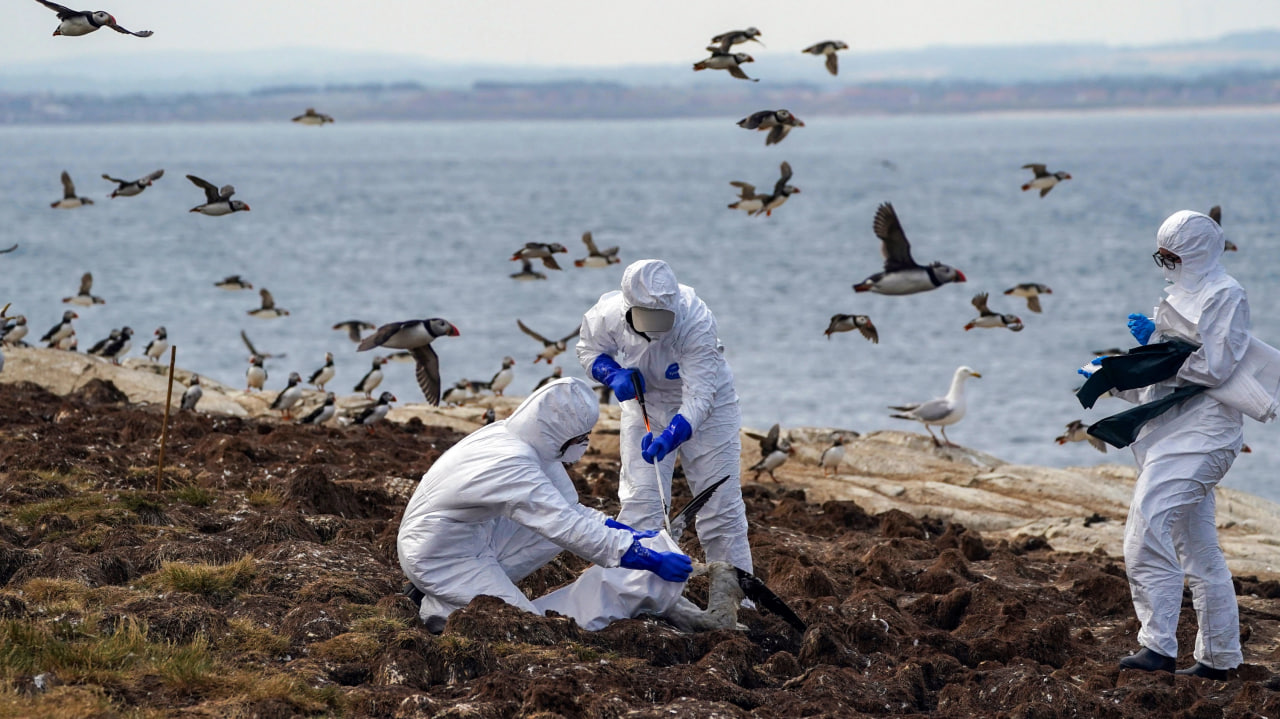Description

Copyright infringement not intended
Context: The H5N1 bird flu strain that has been spreading rapidly among wild birds and various mammals poses a serious threat to human health, according to a joint statement by the Food and Agriculture Organization (FAO), the World Health Organization (WHO) and the World Organisation for Animal Health (WOAH) on July 12, 2023.
Details
- The Joint statement urged countries to enhance their surveillance of animal and human infections and to implement biosecurity measures at poultry farms.
- The new strain of the virus, which emerged earlier this year, has shown high transmissibility and lethality in different animal species, including mink, seals, sea lions and cats. The agencies warned that these mammals, which are closer to humans than birds in terms of biology, could facilitate the adaptation of the virus to infect humans more easily.
- So far, only a few human cases have been reported to the WHO, mostly involving people who had direct or indirect contact with infected poultry or contaminated environments. However, the agencies stressed that the situation could change quickly and unpredictably, as some of the infected mammals could act as mixing vessels for influenza viruses, creating new variants that could be more virulent and contagious for both animals and humans.
- The agencies called for increased collaboration and coordination among animal and human health sectors, as well as among national and international authorities, to prevent and control the spread of the virus and to prepare for any potential pandemic.
- The agencies recommended that countries should make genetic data of viruses from humans and animals available to the public through online databases.
The agencies also proposed several actions to prevent the transmission of the virus:
- Improving biosecurity measures in farms and poultry value chains and following good hygiene practices
- Quickly detecting, reporting and responding to animal outbreaks
- Enhancing influenza surveillance in Animals and Humans
- Carrying out epidemiological and virological investigations around animal outbreaks and human infections
- Promoting collaboration between animal and human health sectors, among others

Keywords
H5N1 avian influenza virus
- The H5N1 avian influenza virus is a deadly strain that originated in China in 1996. It has been infecting and killing birds, both domestic and wild, for decades.
- According to the World Organization for Animal Health (WOAH), 67 countries on five continents reported outbreaks of H5N1 high pathogenicity avian influenza in poultry and wild birds in 2022, resulting in the loss of over 131 million birds due to death or culling.
Food and Agriculture Organization (FAO)
- It was founded in 1945 and celebrates its anniversary every year on 16th October, which is also World Food Day.
- It is an agency of the UN that works to end hunger and improve food and nutrition.
- It has 195 members, including 194 countries and the EU. It has its main office in Rome, Italy.
- It helps governments and other groups to plan and do activities to make agriculture, forestry, fisheries, and land and water better.
- It also does research, gives technical help to projects, runs education and training programs, and collects data on agriculture, output, production, and development.
World Health Organization (WHO)
- It is a UN agency that works to improve global health. Its main office is in Geneva, Switzerland.
- The WHO's main goal is to help people stay healthy and safe, especially those who are poor or in need. It helps countries with health problems, makes rules for international health, collects data on health issues, and organizes meetings for scientists or policymakers to talk about health
- It also publishes the World Health Report, which gives information on different health topics.
- The WHO is run by the World Health Assembly (WHA), which has representatives from its 194 member states.
World Organisation for Animal Health (WOAH)
- It is an intergovernmental organization that works to coordinate, support and promote animal disease control around the world.
- It aims to prevent the spread of epizootic diseases, which are diseases that affect many animals at the same time. It also has other goals, such as the promotion of Veterinary Services, food safety and animal welfare.
- It is not part of the UN system; it has its own institutional and financial autonomy and its activities are based on its constitutional texts.
Must-Read Articles:
BIRD FLU: https://www.iasgyan.in/daily-current-affairs/bird-flu-30
|
PRACTICE QUESTION
Q. Which of the following animals can also be infected by bird flu viruses besides birds?
1. Pigs
2. Cats
3. Ostriches
Choose the correct code;
A) 1 and 2 only
B) 2 and 3 only
C) 1 and 3 only
D) 1, 2 and 3
Answer: D
Explanation: Bird flu viruses can infect not only birds, but also other animals, such as pigs, cats, and ostriches. Pigs can act as mixing vessels for human and avian influenza viruses, while cats and ostriches can be infected by direct contact with infected birds.
|

https://www.downtoearth.org.in/news/health/surging-bird-flu-cases-may-increase-human-infection-risk-warn-un-agencies-woah-90596

















